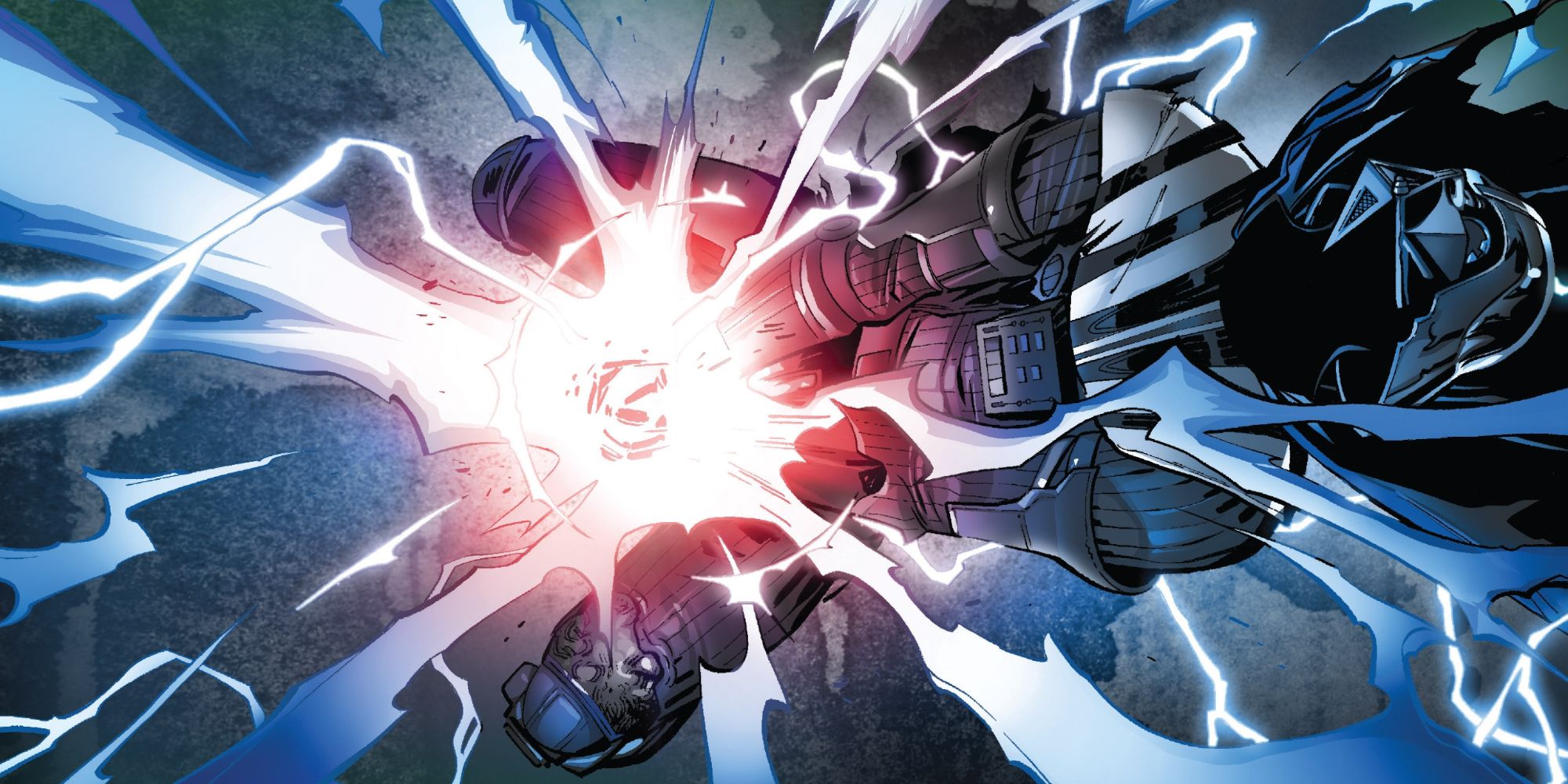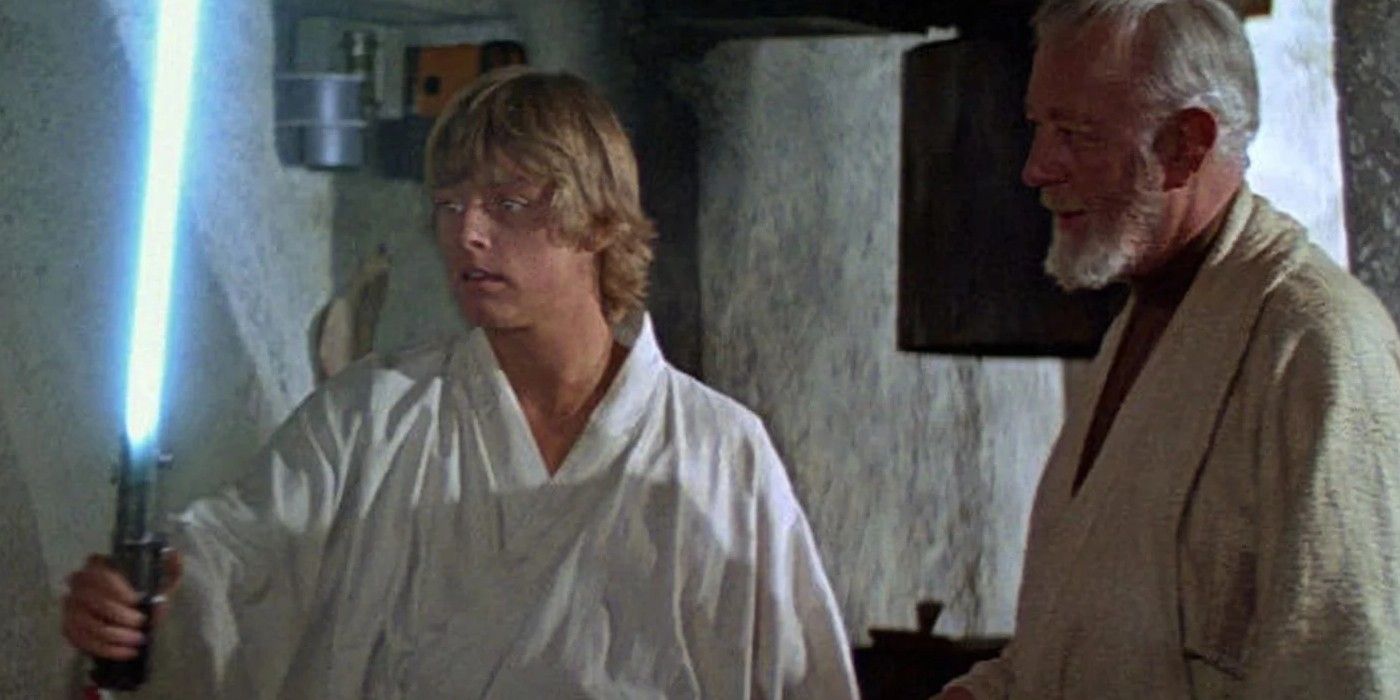Anakin Skywalker’s lightsaber stayed blue throughout the Star Wars prequel trilogy even after he’d fallen to the dark side for one key reason, and The Acolyte just made that quite clear. The Acolyte finale included one of the coolest lightsaber images in all of Star Wars’ movies and TV shows. Just after killing her former master, Sol, Osha held his blue lightsaber as it turned red.

Alongside representing her transition to the dark side based on lightsaber colors and their meanings, this moment was a reflection of how lightsabers work. Specifically, Osha had done something to Sol’s lightsaber that Anakin never did to his own in the prequels, even as he carried out multiple massacres in Star Wars: Episode II – Attack of the Clones and Star Wars: Episode III – Revenge of the Sith. This one difference explains why Osha acquired a red saber so much faster than Anakin did.
There’s More To Turning A Lightsaber Red Than Just Holding It

Lightsabers don’t automatically turn red when the user joins the dark side of the Force; instead, there is a particular process through which a lightsaber becomes red. Specifically, it comes down to the kyber crystal within the saber. Kyber crystals, in addition to making a lightsaber function, give the lightsaber its color. However, red kyber crystals aren’t naturally occurring.
Lightsabers don’t automatically turn red when the user joins the dark side of the Force.
For a kyber crystal of any naturally occurring color (blue, green, purple, and so on) to become red, a dark side Force-user must ‘bleed’ the crystal. This process involves pouring one’s emotions—especially anger and pain—into the crystal. This is precisely why Anakin’s saber was still blue throughout Revenge of the Sith. He may have killed innumerable people in that movie (and, notably, in Attack of the Clones as well), but he had yet to properly bleed his crystal. Until that occurred, no matter how many people he killed, the color wouldn’t change.
In The Acolyte, Osha’s situation is different. Like Anakin, Osha simply killing someone wasn’t enough to turn the saber she was wielding to red. Rather, Osha was able to turn Sol’s saber red because the kyber crystal within it was exposed. As she was killing Sol, a man she had loved as a father figure, she was essentially gripping the crystal, and feeling all of her anger, hate, and pain. This is why, before the saber, the crystal itself can be seen changing color.
The Original Trilogy Really Needed Anakin’s Lightsaber To Stay Blue!

That story was eventually told in the Star Wars comics, at which point Darth Vader went through the proper steps to ‘bleed’ a kyber crystal, creating his own red lightsaber. However, this Darth Vader story also revealed how difficult the process of bleeding a kyber crystal can be. In Star Wars: Darth Vader #5 (2017), written by Charles Soule, Vader is finally tasked with bleeding his own kyber crystal, but the process nearly pulls him back to the light side of the Force.
In fact, this is one of the most profound stories about Anakin Skywalker/Darth Vader’s Star Wars journey in the whole franchise. When Vader attempts to bleed the green kyber crystal that he won in battle against a Jedi (how the Sith commonly acquire their crystals), he begins having visions of himself returning to the light side of the Force—some of them even including a reconnection with his former Jedi master, Obi-Wan Kenobi. While it’s obvious that Darth Vader doesn’t walk away from the dark side at that point, he comes crushingly close.
Not only does this demonstrate Vader’s continued internal conflict, but it also reveals how challenging bleeding a kyber crystal can be. Of course, this was different from Osha’s experience bleeding her own kyber crystal, but those distinctions still make sense. Yes, Vader faced a much more daunting task, but he was also faced with deep turmoil about his choice to abandon everyone he loved and embrace the dark side. Osha did not have that same conflict; rather, from everything shown in The Acolyte finale, she was fully ready to join the dark side.
Vader needed to actively tap into his anger, fear, and pain to bleed the crystal; Osha didn’t.
Moreover, Vader needed to actively tap into his anger, fear, and pain to bleed the crystal; Osha didn’t. She naturally channeled that pain and hatred as she killed Sol, inadvertently bleeding the crystal while holding the broken saber. It’s a bit of a shame that Vader’s crystal bleeding didn’t happen on-screen because the process is so intriguing, but that’s what made this moment in The Acolyte so cool. While Anakin Skywalker may not have had a red lightsaber in the prequel trilogy, Osha turning Sol’s blue lightsaber red in The Acolyte showed audiences what that process looks like in real-time.
All episodes of The Acolyte are now streaming on Disney+.




